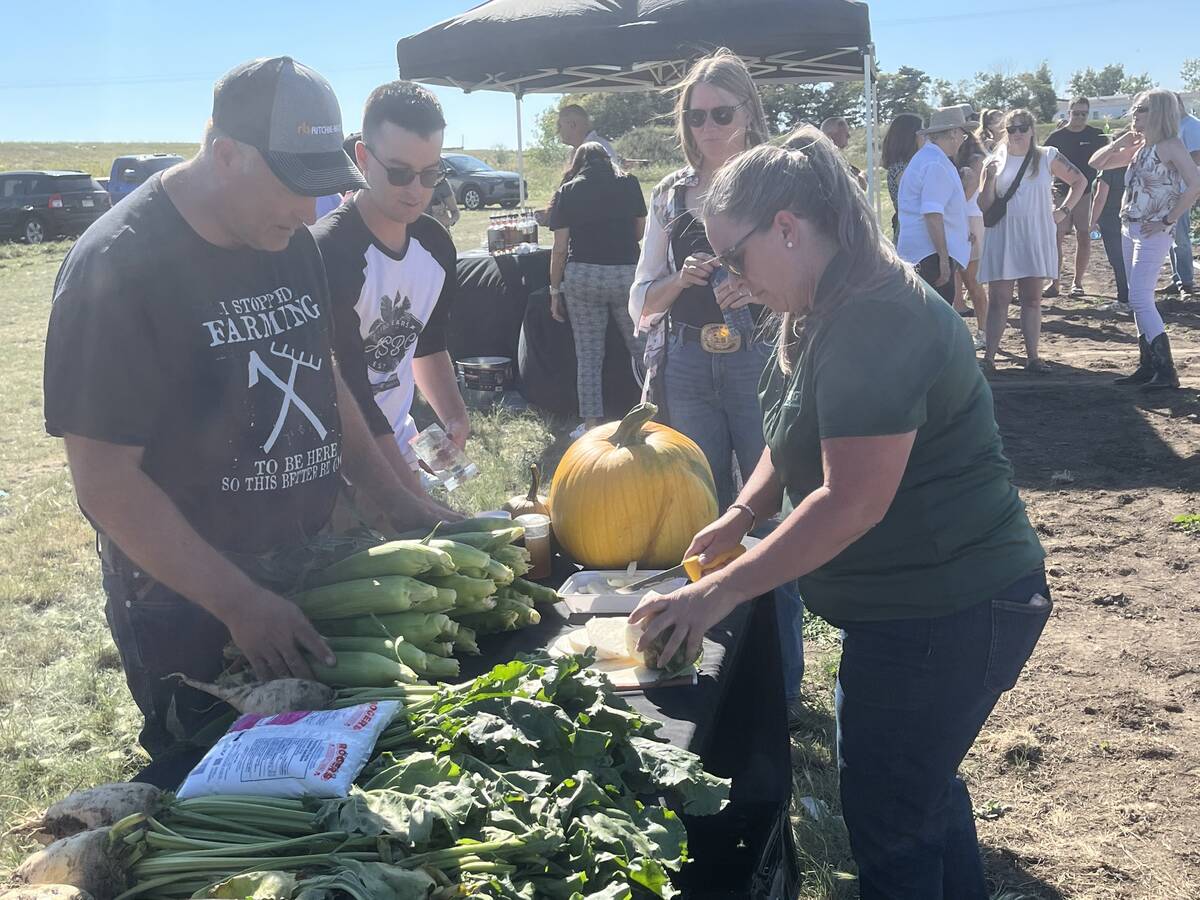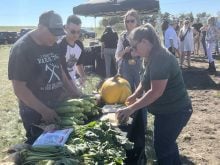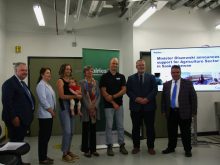A low-tech combination of barley straw in an onion bag suspended in water seems to reduce the amount of algae in a dugout, say agriculture officials.
As the barley straw decomposes, it creates a peroxide type of disinfectant, which minimizes algae growth in dugouts, said County of Camrose fieldman Dave Trautman during a tour stop at a dugout south of Camrose.
At the Camrose site, researchers have divided a dugout in half with a plastic curtain. Both sides of the dugout are aerated, but on one side onion bags with barley straw were added to help reduce the algae.
Read Also

Alberta farm lives up to corn capital reputation
Farm to Table Tour highlighting to consumers where their food comes from features Molnar Farms which grows a large variety of market fruits and vegetables including corn, with Taber being known as the Corn Capital of Canada.
“Last summer it was unbelievable, it was night and day,” said Trautman during the tour.
Mark MacGregor of the Prairie Farm Rehabilitation Administration said there is a noticeable difference between the treated and untreated sides at the Camrose site. He said there is not always such a marked difference at all the 15 sites across the Prairies and researchers do not know why.
Here’s what they do know about reducing the algae growth:
- The dugout needs aeration.
- Only barley straw works. The same disinfectant effect isn’t achieved with other kinds of cereal straw.
- Barley straw is more effective in water that is not cloudy.
- Barley straw is more effective if the bags are not packed too tightly with straw. MacGregor estimates one or two pounds of straw per bag is the right amount. Two square bales were used for a moderate size dugout.
MacGregor said bluestone is still a more effective way of reducing algae, but for producers with fish in their dugout, or who are looking for a more natural way of reducing algae growth, this is an alternative.
“It’s one way to reduce costs and use up something you have around.”














